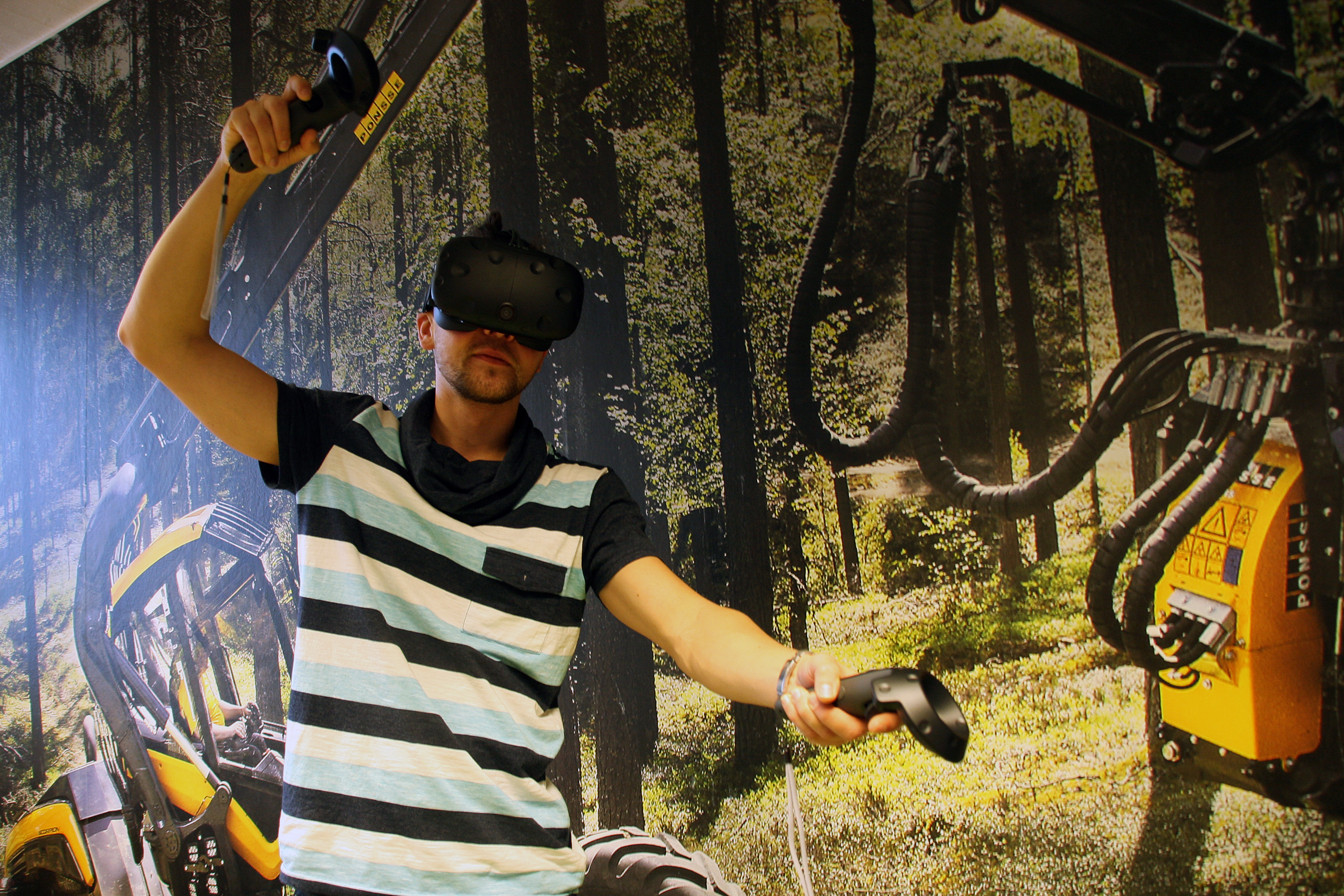
In a virtual forest, the forest owner can test how many logs would be needed to turn a decent profit and what the forest would look like after harvesting.
In the future, forest owners can walk about their forests in their own living room, using virtual glasses. They can pretend to wield the harvester and chainsaw using two game controllers.
The VRForest research team at the University of Helsinki has designed an app demo for virtual forest management. It takes a quarter of an hour to transform the conference room of the Department of Forest Sciences into a forest in need of thinning.
“The application allows forest owners to test how, for example, upper-layer thinning or clear cutting will change the forest or how profitable a thinning is,” says Mr. Osmo Mattila, PhD (For), one of the team coordinators.

New services for forest sector
The use of Virtual Reality is said to have exploded in 2016. The glasses and applications have become accessible to consumers and the technology is expected to be the next world-changing power after the smartphones and internet.
The new technology is already used in machine maintenance training, as well as to test construction drawings, to sell real estate and to create travel experiences.
The VRForest research team aims to create new virtual services for the forestry sector, but also for other actors. To support the development of the new applications, the team also carries out user and business model research.
According to Mattila, there is a need for new services among forest owners, for example. Last year Mattila defended his doctoral thesis on service-dominant thinking in the Finnish forestry service market.
“We interpret the customers’ wishes,” is how Mattila describes the role of VRForest. The Technology Research Center of the University of Turku is responsible for the technical creation of the virtual reality. The project is funded by the forestry-related Metsämiesten Säätiö foundation and the Finnish Funding Agency for Innovation Tekes.
The research team is currently looking for business partners to participate in the competition arranged by Tekes called Challenge Finland. The plan is to submit their project MiReUX – Mixed Reality User Experiences.
The objective of the Tekes competition is to bring together the development work of research institutes and enterprises in order to promote commercial innovations. Virtual Reality is expected to generate about EUR 135 thousand million in revenue by the year 2020.
Augmented and mixed
VRForest’s projects use mixed reality, which combines virtual reality (VR) and augmented reality (AR).
In virtual reality, the user dons virtual glasses to be immersed in a completely different location, such as in the fantasy world of a game or his or her very own forest. A well-known example of augmented reality is the Pokémon Go game, in which virtual creatures appear on the phone’s screen, in the actual landscape before the user’s eyes.
In addition to the Forestry App, Mattila presents a demo of a maintenance exercise with a harvester. With the help of virtual glasses, the huge machine will appear in the same place as the user – in 3D and actual size, of course. In the best learning applications, the user can almost feel the bolts he is turning.
“Research has shown conclusively that learning by doing is the best method. Virtual reality is a great step forward in learning,” says Mattila.
Tekes – the Finnish Funding Agency for Innovation
How does it actually feel?
My first steps in the VRForest woods are uncertain. But yes, I am really moving around, seeing the spruce tops and – ouch, getting whipped in the face by a virtual branch.
The spruce forest is based on a real one. It needed a 360-degree photo and laser scanning, and the virtual forest has as many logs as the real one. In other ways, however, the stand created by VRForest resembles a computer game with fairly simple graphics.
The user of the Forestry App can move in the virtual forest three metres in any one direction. When the limit is reached, a bluish wall appears ahead. Of course it is possible to move further ahead by jumping to a new location using the game controller.
It is also possible to harvest the trees by pressing the buttons of the game controllers. The application calculates the revenue that the logging would bring. Felling trees in virtual reality is a matter of seconds, because you want to zap them they way you shoot enemies in a computer game. When a bear appears from behind a spruce, I very nearly shoot him, too.
When I take the virtual glasses off, the meeting room at the Department of Forest Sciences of the University of Helsinki looks strange for a moment. Although the virtual forest is currently quite simple, it managed to entrap me.
